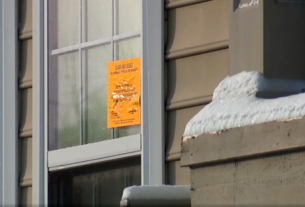A midair collision near Washington, D.C.’s Reagan National Airport killed 67 people. An American Airlines regional jet and a U.S. Army UH-60 Black Hawk helicopter crashed, raising concerns about airspace safety. Among the victims was Capt. Rebecca M. Lobach, an Army aviation officer known for her service.
The crash occurred in one of the most congested airspaces in the country. Experts have long warned about the risks near Reagan National, where commercial and military aircraft operate in tight corridors. The incident has renewed concerns, especially as Congress recently approved more flights at the airport.
Investigators are examining flight data, communication logs, and pilot actions. Initial reports show conflicting altitude readings between the two aircraft. The jet’s recorder showed 325 feet, while air traffic control data placed the helicopter at 200 feet.
Authorities are working to determine why the aircraft were in such proximity. Flight path deviations, possible miscommunication, and response times are key areas of focus. The 100-foot difference in altitude readings is central to the investigation.
The National Transportation Safety Board (NTSB) is leading the inquiry. A preliminary report is expected in 30 days, but full investigations typically take a year. Officials have imposed tighter airspace restrictions to prevent further accidents.
The collision has reignited discussions about air traffic management near Washington, D.C. Pilots have long voiced concerns over the complexity of flying through restricted airspace. Some aviation groups are pushing for updated flight procedures and stricter oversight.
Survivors and families of victims are demanding accountability. Legal experts suggest lawsuits could follow if negligence is found. “The public deserves to know what happened and what will change to stop this from happening again,” said an aviation attorney.
The crash has also sparked debate about military and commercial flight coordination. Some experts argue that separate corridors for civilian and military aircraft could reduce risks. Others believe enhanced training and improved communication systems are the best solutions.
Witnesses described seeing flames and debris falling from the sky. One resident recalled hearing an explosion and feeling the ground shake. Emergency responders arrived within minutes, but there were no survivors from either aircraft.
Both the Federal Aviation Administration and the Pentagon are involved in the investigation. Officials are reviewing whether existing safety measures were followed. If protocol failures are identified, new regulations could be introduced.
Air traffic controllers at Reagan National have faced staffing shortages and increased workloads. Some pilots have reported delayed instructions and miscommunications. The role of air traffic control in this collision is another aspect investigators are examining.
Reagan National’s location presents unique challenges. The airport sits between restricted airspace near the White House and the Pentagon. Pilots must follow strict flight paths, but minor errors can lead to dangerous situations.
Congress may consider legislative action to improve airspace safety. Some lawmakers are calling for limits on additional flights until further assessments are completed. Others want more investments in advanced air traffic control technology.
The military is also reviewing its procedures for operating helicopters near busy airports. The UH-60 Black Hawk is frequently used for training and transport missions. Coordination with civilian flights will be a priority moving forward.
The crash serves as a reminder of the risks associated with congested air travel. Washington, D.C.’s airspace remains one of the most challenging in the world. Aviation officials must address these risks to prevent future tragedies.
Memorial services are being planned for the victims. Capt. Lobach’s family described her as a dedicated officer who loved flying. “She served with honor and always put others first,” a family statement read.
The NTSB will release updates as the investigation progresses. Families and the public will be watching closely for answers. Authorities must act to ensure a similar disaster does not happen again.




